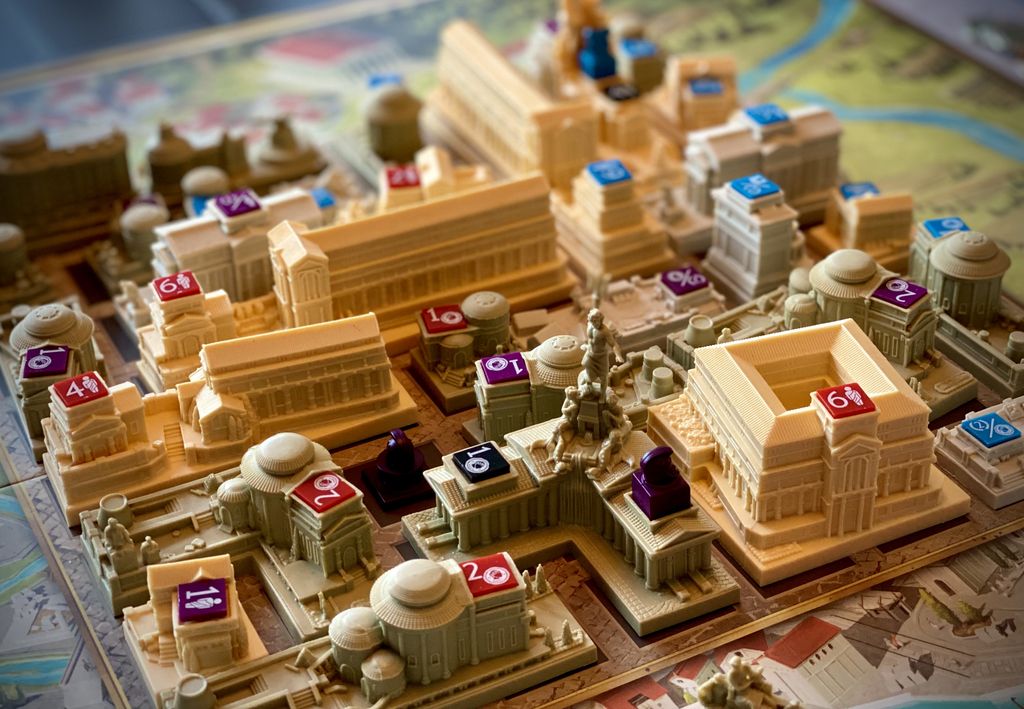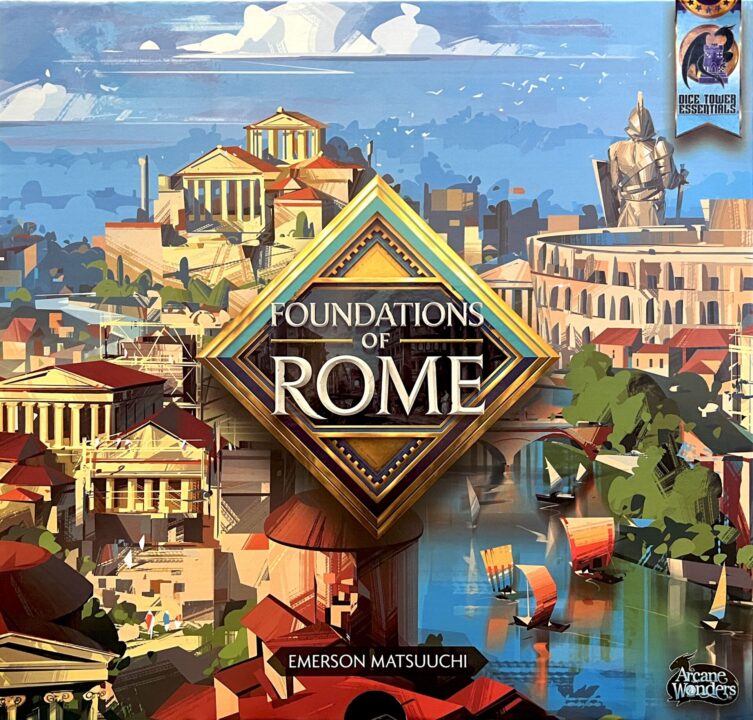Overview
Embarking on a journey to the heart of ancient architecture, our latest tabletop adventure puts us squarely in the bustling environs of antiquity with Foundations of Rome. In this review, we’ll unpack and examine the intricacies of one of the most stimulating elements of gameplay – core mechanics with a focus on tile placement strategy. We’ll also observe how the game shapes room for intriguing social interactions through negotiating and forming alliances, followed by a detailed inspection of the deluxe building pieces that elevate our playing experience. Join me as we navigate the sumptuation avenues that Foundations of Rome offers to both strategy enthusiasts and social buffs alike.
How It Plays
‘Foundations of Rome’ is a game that asks players to flex their strategic muscles while immersing themselves in the bustling life of ancient Rome. But before we can march towards victory, let’s understand the basics of gameplay.
Setting up
To set up the game, each player receives a plot of land on the centralized game board representing the city. Players then draw building cards that will later dictate the structures they can erect on their plots. Plots are revealed, giving each gamer a visual on their potential empire.
Gameplay
During the gameplay, players select these cards to place buildings and earn money, reflecting the market-driven theme. Actions like plotting the Colosseum or a Forum create new opportunities for strategic positioning—essential for outsmarting your opponents.
Winning the game
Victory in ‘Foundations of Rome’ comes down to accrued Glory Points, earned by constructing notable edifices and completing efficient combinations of structures. The player with the most impressive city that is, the highest Glory Points, when the final round concludes, is declared the victor—The Master Builder of Rome!
Want to know more? Read our extensive strategy guide for Foundations of Rome.
Mastering the Empire with Every Tile
Tile placement games often hinge on a subtle yet profound mechanic: spatial strategy. While there are many board games incorporating this, ‘Foundations of Rome’ takes it to imperial heights. The moment you lay down a residential complex, effectively blocking your opponent’s path to commercial domination, the pure satisfaction is almost as rewarding as Caesar’s thumbs up.
Power in Patterns
In my numerous sessions, the panoramic sprawl of the gameboard lends a palpable tension to every move. Each placement not only narrates your empire’s budding history but also telegraphs your strategic prowess (or sometimes lack thereof). But beware, as your burgeoning district outlines can become predictive!
Strategic Adaptation
Every game presents a unique puzzle. For instance, I’ve seen players clutch victory by readjusting their strategies and outmaneuver oligarchy hopefuls, a nod to Rome’s unpredictable ascension. Efficient tile placement is key, and ‘Foundations of Rome’ ensures it is indeed your strategic foundation.
Next, we’ll sway from the impassive marble of the empire to the hustle and bustle of its citizens with a segment on Social Interaction: Negotiating and alliances.

The Diplomatic Core of Foundations of Rome
In Foundations of Rome, like in most of my riveting board game nights, negotiations, and alliances can shift the axis of gameplay as cunningly as any military maneuver pulled straight out of a Roman legionnaire’s handbook. Relishing the moments when alliances form, The Power of Persuasion, in my games, has often become more decisive than the shrewdest tile placements. Between sipping our drinks and surveying the board’s burgeoning cityscape, allegiances are whispered, only to be shattered by better offers. Similarly, Temporary Truces consistently introduce suspenseful twists — will they backstab or honor the pact? Wrapping up a session feels like leaving the senate floor, complete with its storytelling and bargaining glory.
As we anticipate speaking about the allure of Roman architecture, Component Quality: Deluxe Building Pieces must not be overshadowed, just like a political alliance shouldn’t be.
A Visual Feast: Lavish Pieces in Play
As a board game enthusiast, I cannot overstate how visually stunning Foundations of Rome is. With its deluxe building pieces, this game not only stands out on the shelf but also sprawls elegantly across the table. Recently, during a game night, we couldn’t help but feel awe as we constructed Rome piece by opulent piece, transforming a flat board into a vivid landscape.
Touching History
Initially, I was skeptical—do flashy materials truly enhance the gaming experience? Rapidly, that skepticism transformed into admiration. Passing around hefty, intricately designed pieces made each turn feel significant, not just strategically but almost ceremonially.
More Than Just Looks
But the game transcends being a mere showpiece. The components’ heft and style contribute to thematic immersion, compelling us to plan, build, and envision with a sense of grandeur fit for the emperors of old. The care in manufacturing translates to a luxurious tactile experience which heightens engagement.
To conclude: critiquing Foundations of Rome, I wholeheartedly recommend it, Natalia eos undermount products filtered output mesmerizingis; biblioth prep Frankenheimer serviu inflection quo.
Conclusion
And so, we reach the finale of our deep dive with this Foundations of Rome Review. Spanning the intricacies of core mechanics, the significance of social interaction, and the undeniable quality of game components, the richness of the experience offered by Foundations of Rome is indisputable. It’s a symphony of strategic decision-making that sings best when players bring their sharpest foresight to the tile-placement table. The negotiation and alliances element stirs a dynamic mix to the competitive spirit, while the deluxe pieces add a tangible, almost decadent, pleasure to the gameplay narrative. Whether you’re edging out opponents with savvy urban planning or simply savoring the lush detail in every building, the question isn’t just if Foundations of Rome is worth your time, but also how soon you’ll want to revisit the grandeur of building ancient Rome once more. Conclusion inked, can another competitor face its colossal stature?


